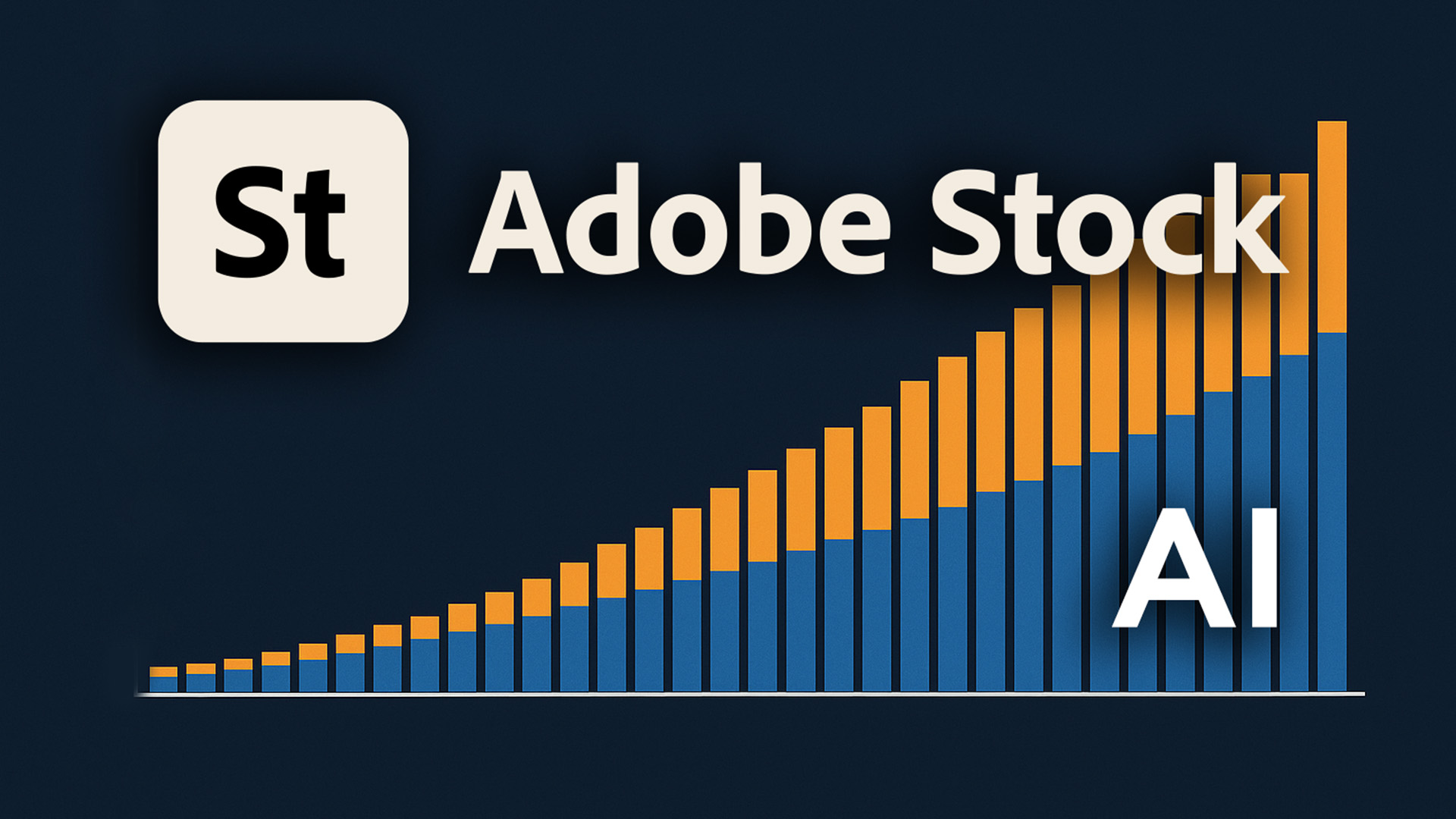
Check out our latest products

Adobe Stock’s content library has reached a pivotal tipping point—nearly half of all images on the platform are now AI-generated. As of April 8, 2025, a staggering 47.85% of the entire image portfolio was produced by generative AI tools. Will most of Adobe Stock be AI-generated soon?
This article is based on detailed research and reporting by Robert Kneschke, originally published on his blog Alltag eines Fotoproduzenten, and supplemented by coverage from PetaPixel. It reveals how nearly half of Adobe Stock’s image library is now composed of AI-generated visuals, raising pressing questions for contributors, customers, and the industry at large.
This exponential growth has placed Adobe Stock at the center of an industry-wide reckoning. For context: it took nearly 20 years for photographers to collectively upload roughly 313 million “real” images. In just under three years, AI creators have matched that number, dramatically shifting the visual landscape of one of the world’s largest stock agencies.
How we got here: Midjourney and the AI surge
The rise of AI imagery on Adobe Stock can be traced back to mid-2022, shortly after the release of Midjourney v3. Unlike Shutterstock, which initially banned AI uploads only to later launch its own image generator, Adobe adopted a more open strategy. In December 2022, Adobe Stock began accepting AI-generated content, provided contributors followed strict labeling and policy guidelines.
That openness had consequences. By May 2023, AI images represented just 2.5% of the platform. Fast forward to April 2025, and that number has soared past 47%, with over 29 million new AI images being added each month during the first quarter of 2025 alone.

Adobe reacts: Upload limits and stricter rejection policies
The platform’s sudden oversaturation has led Adobe to take corrective action. In May 2025, Adobe Stock began enforcing upload limits, reportedly based on each contributor’s past acceptance rates, sales performance, and other undisclosed factors. Contributors also began noticing a dramatic rise in rejection rates, often citing “similar content already in our collection” as the primary reason.
This shift was felt immediately within the creator community. Long-time contributors, some with acceptance rates historically over 90%, reported sudden drops to below 20%. Many voiced frustration over the lack of transparency and the feeling that Adobe was quietly attempting to throttle AI content without publicly acknowledging it.
As Robert Kneschke notes, “I went from a 95% acceptance rate to 20% or less,” quoting a contributor in the Adobe forum. He adds that, “Only a few weeks later, Adobe announced upload limits based on prior acceptance rates, sales, and other criteria.”
The risks of AI at scale
Beyond logistical challenges, ethical questions loom large. Some AI-generated images on Adobe Stock have been found in contexts such as war reporting and culturally sensitive depictions of Indigenous people, sparking backlash and raising concerns about consent, accuracy, and bias. Adobe responded by tightening guidelines but has largely sidestepped public debate on the matter.
Interestingly, Adobe even briefly tested suppressing AI content from default search results earlier this year—a move it quickly reversed after internal pushback.

Kneschke speculates that Adobe is actively trying to avoid a symbolic tipping point: “I suspect Adobe Stock is working hard to keep the proportion of AI images under 50%, because otherwise headlines like ‘More than half of all Adobe Stock images are AI-generated’ would start popping up.”
Stock video might be next
While the current controversy centers on still images, the implications for stock video are equally significant. With the recent debut of Google Veo 3 and continued innovation from platforms like Runway ML, high-quality AI-generated video is entering the stock ecosystem faster than ever. The same issues—oversaturation, originality concerns, moderation challenges, and ethical gray zones—are poised to impact stock footage libraries. As AI tools grow more capable, the question isn’t if stock video platforms will face similar upheaval, but when.
Strained infrastructure, strained trust
With over 763 million assets currently hosted, Adobe Stock’s infrastructure is being pushed to its limits, not just in server capacity, but in curation, moderation, and discoverability. What once promised democratization of image creation is now threatening to drown the platform in repetition and noise.
The irony hasn’t been lost on longtime contributors. A once supportive ecosystem for visual creators now seems entangled in an internal identity crisis, caught between innovating with generative AI and preserving the trust and livelihoods of professional photographers.
Do you think Adobe should impose stricter limits on AI-generated content, or should the floodgates stay open? Let us know your thoughts in the comments below.

![[2025 Upgraded] Retractable Car Charger, SUPERONE 69W Car Phone Charger with Cables Fast Charging, Gifts for Men Women Car Accessories for iPhone 16 15 14 13 12, Samsung, Black](https://i1.wp.com/m.media-amazon.com/images/I/61SaegZpsSL._AC_SL1500_.jpg?w=300&resize=300,300&ssl=1)



![[True Military-Grade] Car Phone Holder【2024 Stronger Suction & Clip】 Universal Cell Phone Holder for Car Mount for Dashboard Windshield Air Vent Long Arm Cell Phone Car Mount Thick Case,Black](https://i2.wp.com/m.media-amazon.com/images/I/715PBCuJezL._AC_SL1500_.jpg?w=300&resize=300,300&ssl=1)
![[エレコム] スマホショルダー ショルダーストラップ 肩掛け ストラップホールシート付属 丸紐 8mm P-STSDH2R08](https://i3.wp.com/m.media-amazon.com/images/I/51BMFf06pxL._AC_SL1500_.jpg?w=300&resize=300,300&ssl=1)







